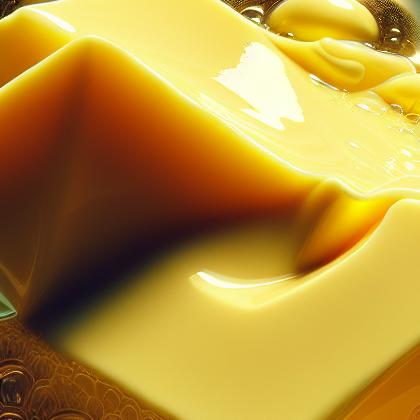Melted Butter

Butter is a dairy product that consists of butterfat, milk proteins, and water. It is made by churning fresh or fermented cream or milk. It is used as a spread and a condiment—and in cooking, such as baking, sauce making, and pan frying.Commonly made from cows' milk, butter can also be manufactured from the milk of other mammals, including sheep, goats, buffalo, and yaks. Producers sometimes add salt, flavorings, or preservatives. Rendering butter produces clarified butter or ghee, which is almost entirely butterfat.Butter is a water-in-oil emulsion that results from an inversion of the cream, an oil-in-water emulsion. The milk proteins are the emulsifiers. Butter remains a solid when refrigerated, but softens to a spreadable consistency at room temperature, and melts to a thin liquid consistency at 32–35 °C (90–95 °F). The density of butter is 911 g/L (56.9 lb/ft3). It generally has a pale yellow color, but varies from deep yellow to nearly white.
Melted butter Pairs With:

Melted butter Properties:
| Food Property | Type | Description |
|---|---|---|
| Texture | Creaminess | Melted butter has a smooth and creamy texture, making it easy to spread or drizzle over food. |
| Nutritional Value | Macronutrients | Melted butter is rich in fat, providing energy and flavor to dishes. |
Food Pairing App - Version 1.2.0
